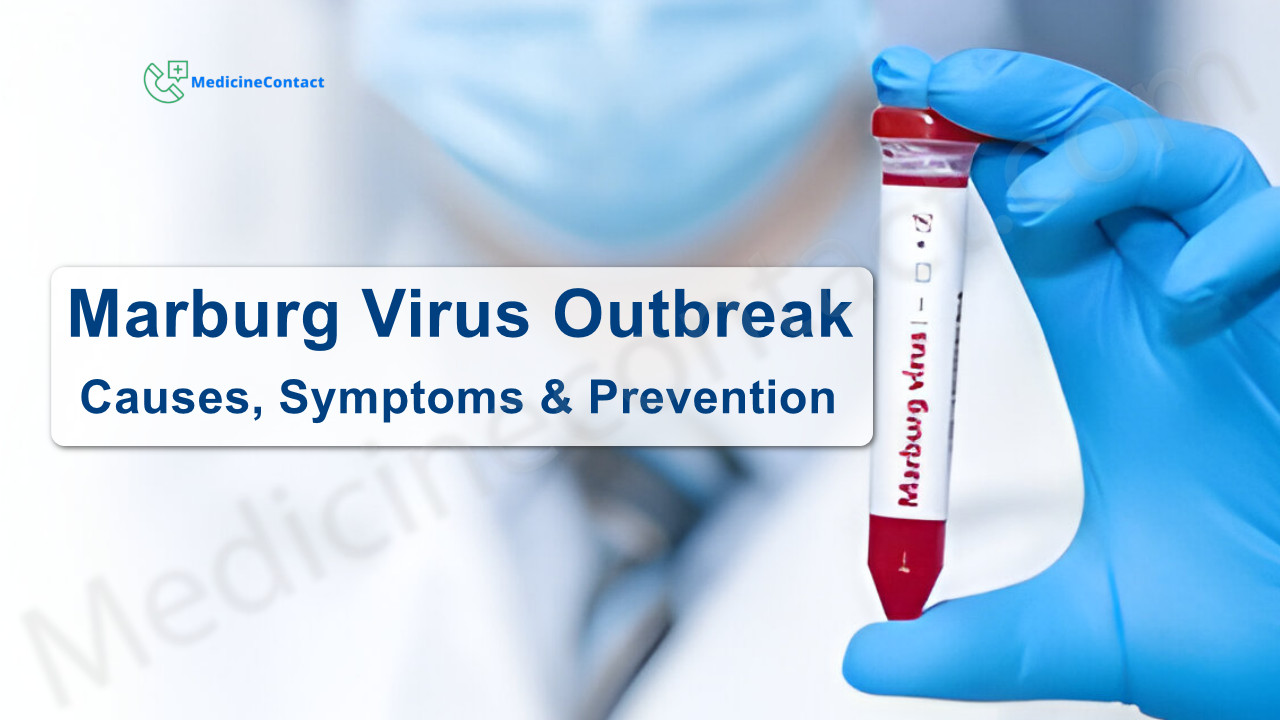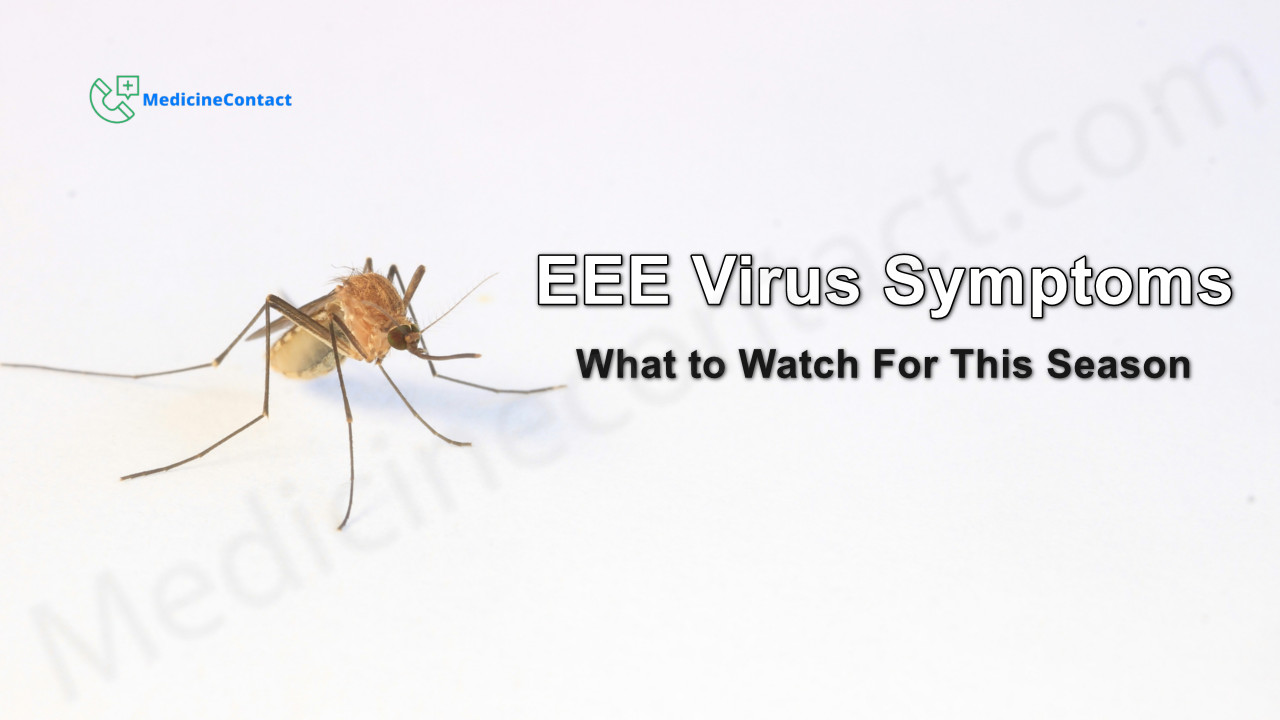
Introduction
The recent Marburg virus outbreak in Rwanda has gained significant attention due to its severity and potential for widespread impact. This viral hemorrhagic fever, caused by the Marburg virus, is a rare yet deadly disease that poses a substantial threat to public health. Understanding the nature of such viral diseases is crucial for effective prevention and control measures.
The Marburg virus, which uses RNA as its genetic material instead of the more usual DNA, has a high case fatality rate and shares many clinical similarities with Ebola virus disease. The outbreak reported on September 27, 2024, marks the first-ever occurrence of Marburg virus disease in Rwanda. As of late September 2024, there have been 26 confirmed cases and 8 fatalities.
This article aims to provide readers with comprehensive insights into:
- Symptoms associated with Marburg virus disease
- Transmission methods that facilitate its spread
- Preventive measures to protect individuals and communities
By exploring these topics, readers will gain a better understanding of how to reduce risks related to viral hemorrhagic fevers and contribute to controlling such outbreaks effectively.
Understanding the Marburg Virus
What is the Marburg Virus?
The Marburg virus is a highly infectious virus that belongs to the same family as the Ebola virus, called Filoviridae. It causes a severe illness known as Marburg virus disease (MVD), which is a type of hemorrhagic fever. This disease is marked by sudden symptoms and has a high death rate. Because of its potential to cause widespread harm and difficulty in treating it, the Marburg virus is classified as a top-level bioterrorism threat.
A Brief History of Marburg Virus Outbreaks
The Marburg virus was first discovered in 1967 when outbreaks happened at the same time in Marburg and Frankfurt, Germany, and Belgrade, Serbia. These initial cases were traced back to laboratory workers who had been exposed to infected African green monkeys imported from Uganda. Since then, there have been several notable outbreaks:
- 1975: South Africa
- 1998-2000: Democratic Republic of Congo
- 2004-2005: Angola
Each outbreak has shown how dangerous this virus can be, with varying death rates depending on the situation.
How Does MVD Differ from Ebola?
Both Marburg virus disease and Ebola virus disease show similar symptoms—such as high fever, severe headache, muscle pain, vomiting, diarrhea, and bleeding—but they are caused by different viruses within the same family.
Key Differences:
- Virus Strains:MVD is caused by the Marburg virus.
- Ebola is caused by various strains of the Ebola virus.
- Geographical Occurrence:MVD outbreaks have been more sporadic and limited compared to Ebola.
- Ebola has had more frequent and larger-scale outbreaks across West Africa.
Both diseases need immediate medical care and strict public health actions to control outbreaks effectively. Knowing these differences helps us respond better during viral hemorrhagic fever outbreaks.
Recent Outbreak in Rwanda
Timeline of the Outbreak
The Marburg virus outbreak in Rwanda was first reported on September 27, 2024. This marks the initial occurrence of Marburg virus disease (MVD) in the country. The outbreak has prompted immediate action from health authorities to contain and manage the spread of this severe viral hemorrhagic fever.
Number of Confirmed Cases and Fatalities
As of late September 2024, there have been:
- 26 confirmed cases of Marburg virus disease
- 8 fatalities, resulting in a case fatality rate of approximately 31%
This data highlights the critical nature of the outbreak and underscores the urgency required in response efforts.
Geographic Spread Across Districts
The outbreak has affected multiple districts within Rwanda. Notably:
- A significant number of cases have been reported in Kigali, impacting healthcare workers and local communities.
- Other districts experiencing confirmed cases include areas outside of Kigali, pointing to a broader geographic spread.
Health authorities are actively engaged in tracing contacts and monitoring potential new cases to curb further transmission.
These details provide a clear picture of the current status and impact of the outbreak, essential for understanding its scope and implications for public health in Rwanda.
Impact on Healthcare Workers During the Outbreak
Statistics on Affected Healthcare Workers in Rwanda
The outbreak virus has significantly impacted the healthcare system in Rwanda, with a notable number of healthcare workers among those affected. As of late September 2024, there have been 26 confirmed cases, including several frontline workers. Tragically, 8 fatalities have been reported, underscoring the deadly nature of the Marburg virus disease (MVD).
Challenges Faced by Healthcare Systems
Dealing with viral hemorrhagic fevers like MVD presents numerous challenges for healthcare systems. Key issues include:
- Resource Constraints: Limited availability of personal protective equipment (PPE) and medical supplies.
- Training Gaps: Inadequate training on infection prevention measures for healthcare workers.
- Psychological Stress: High levels of stress and burnout among staff due to increased workload and fear of infection.
Importance of Protective Measures
Implementing stringent protective measures is crucial to safeguarding healthcare workers:
- Proper Training: Ensuring that all healthcare workers receive comprehensive training on infection control and use of PPE.
- Adequate Equipment: Providing sufficient PPE such as gloves, masks, gowns, and face shields.
- Support Systems: Establishing mental health support services to help staff cope with the psychological impact of dealing with a new virus outbreak.
These protective measures are essential in maintaining a robust healthcare system capable of effectively managing disease outbreaks like MVD.
Symptoms, Transmission Methods, and Preventive Measures Against Marburg Virus Disease
Clinical Presentation of Marburg Virus Disease (MVD)
Marburg virus symptoms typically manifest suddenly and can be severe. Common symptoms include:
- Fever
- Chills
- Headache
- Muscle pain
- Rash
- Chest pain
- Sore throat
- Diarrhea
- Vomiting
- Abdominal pain
In more severe cases, patients may experience unexplained bleeding or bruising. The incubation period for the virus ranges from 2 to 21 days. As the disease progresses, hemorrhagic signs may develop, potentially leading to shock and death.
Disease Transmission Routes
Marburg virus is primarily transmitted through direct contact with blood or bodily fluids of infected individuals. The virus can also spread via contaminated objects or through contact with infected animals.
Common transmission routes include:
- Direct contact with bodily fluids (e.g., blood, saliva, urine)
- Contaminated medical equipment
- Exposure to infected animals such as bats and nonhuman primates
Role of Animals in the Transmission Cycle of Marburg Virus Disease
Fruit bats and nonhuman primates are known reservoirs for the Marburg virus. These animals play a crucial role in the transmission cycle:
Fruit Bats
Rousettus aegyptiacus, a species of fruit bat, is considered a natural host of the Marburg virus. These bats can harbor the virus without showing symptoms, facilitating its spread to other animals and humans.
Nonhuman Primates
Nonhuman primates, such as monkeys and apes, can contract Marburg virus from bats or other infected animals. Human outbreaks have occurred following close contact with these primates or their bodily fluids.
Preventive Measures Against Marburg Virus Disease Spread in Communities
To mitigate the risk of MVD transmission at the community level, several preventive measures are recommended:
Hygiene Practices
Promoting good hygiene practices is vital. Handwashing with soap and water should be encouraged, especially after caring for sick individuals or handling potentially contaminated materials.
Avoiding Contact with Sick Individuals
Avoiding direct contact with individuals showing symptoms of MVD is crucial. This includes refraining from touching their bodily fluids or personal items that may be contaminated.
Health Facility Precautions
Limiting visits to healthcare facilities in outbreak areas for non-essential care helps reduce exposure risks. Special caution is advised when dealing with traditional healers or caves inhabited by bats.
Monitoring Health Post Exposure
Individuals who have been in outbreak areas should monitor their health for up to 21 days after potential exposure. Prompt reporting of any symptoms can aid in early detection and containment efforts.
By understanding these critical aspects of Marburg virus disease—its symptoms, transmission methods, and preventive measures—the community can better prepare and respond to outbreaks effectively.
Moreover, it's important to understand that the severity of MVD can vary significantly among individuals due to factors such as age, sex, overall health status, and pre-existing
Preventive Measures Against Marburg Virus Disease Spread in Communities
Preventing Marburg virus disease (MVD) at the community level is crucial to controlling outbreaks. Here are some key strategies:
1. Promoting Good Hygiene
Regular handwashing with soap and water, especially after visiting hospitals or handling animals, helps minimize the risk of infection.
2. Avoiding Contact with Sick Individuals
Communities should be educated on the importance of avoiding physical contact with those exhibiting Marburg virus symptoms, such as fever, chills, muscle pain, and unexplained bleeding.
3. Safe Handling of Bodies
Proper handling and burial of deceased individuals who succumbed to MVD by trained personnel can prevent further spread.
4. Animal Interaction Precautions
Since fruit bats and nonhuman primates are known animal reservoirs for MVD transmission, avoiding caves inhabited by bats and refraining from eating bushmeat are critical steps.
5. Community Awareness Campaigns
Educating the public about MVD symptoms, clinical presentation, and preventive measures through local media and health workers ensures better preparedness and response.
Implementing these strategies effectively reduces the risk of Marburg disease spreading within communities.
WHO's Response to the Outbreak in Rwanda
The World Health Organization (WHO) has been instrumental in supporting Rwandan health authorities during the Marburg virus outbreak. Their involvement has been pivotal in several key areas:
1. Case Management Guidance
The WHO provided detailed guidance on managing Marburg virus disease cases. This included protocols for patient isolation, treatment procedures, and guidelines on minimizing transmission risk within healthcare facilities. By offering these resources, the WHO ensured that Rwandan healthcare workers were well-equipped to handle infected patients effectively and safely.
2. Laboratory Testing Capabilities
Speedy and accurate diagnosis is crucial in controlling viral outbreaks. The WHO facilitated the enhancement of laboratory testing capabilities in Rwanda, enabling quicker detection of Marburg virus disease cases. This support included providing necessary equipment, reagents, and training for laboratory personnel to ensure high standards of testing accuracy.
The collaborative efforts between the WHO and local health authorities have significantly bolstered Rwanda’s capacity to manage this challenging outbreak. These measures are vital not only for immediate response but also for strengthening long-term resilience against future viral threats.
Treatment Options for Marburg Virus Disease: Current Status and Future Prospects
Current Status of Treatment Options
Currently, the treatment options for Marburg virus are mainly supportive. This means that the focus is on managing symptoms and providing care to help the body fight the infection. The main supportive treatments include:
- Hydration and Electrolyte Management: Ensuring patients receive adequate fluids and electrolytes to combat dehydration caused by severe diarrhea and vomiting.
- Symptomatic Relief: Administering medications to alleviate pain, reduce fever, and manage other symptoms such as nausea.
- Oxygen Therapy: Providing oxygen support to patients experiencing respiratory distress.
Effective management of these supportive care measures can significantly improve patient outcomes despite the absence of specific antiviral treatments.
Research on Candidate Vaccines
Research on candidate vaccines is actively ongoing, aiming to develop effective preventative measures against this ebola-like virus. Several promising candidates are in various stages of development:
- rVSV-MARV Vaccine: A recombinant vesicular stomatitis virus-based vaccine showing potential in preclinical trials.
- ChAd3-MARV Vaccine: A chimpanzee adenovirus vector vaccine currently undergoing clinical trials.
Preliminary studies indicate these vaccines could induce strong immune responses, providing hope for future protection against Marburg virus outbreaks. However, further research and extensive clinical testing are required before these vaccines can be approved for widespread use.
In the meantime, it's crucial to focus on supportive care and strictly follow preventive measures to effectively manage Marburg virus disease.
Conclusion
Awareness and education on viral diseases like Marburg Virus Disease (MVD) are critical in mitigating the impact of such outbreaks. Understanding symptoms, transmission methods, and preventive measures empowers individuals and communities to respond effectively.
Staying informed about health alerts related to viral outbreaks, particularly the recent one in Rwanda, is essential. Vigilance and proactive measures can help control the spread of this severe viral hemorrhagic fever and protect public health.
By prioritizing education and remaining alert to health updates, we contribute to a safer environment for all.
FAQs (Frequently Asked Questions)
What is Marburg virus disease and how does it differ from Ebola virus disease?
Marburg virus disease (MVD) is a severe viral hemorrhagic fever caused by the Marburg virus, which belongs to the Filoviridae family. While both MVD and Ebola virus disease share similar clinical presentations and transmission routes, they are distinct viruses with different genetic materials and historical contexts.
What are the symptoms of Marburg virus disease?
Symptoms of Marburg virus disease typically include high fever, severe headache, muscle pain, vomiting, diarrhea, and in severe cases, bleeding from various body parts. Early recognition of these symptoms is crucial for timely medical intervention.
How is Marburg virus transmitted?
Marburg virus is primarily transmitted through direct contact with infected individuals or their bodily fluids. Animal reservoirs, particularly fruit bats and nonhuman primates, also play a significant role in the transmission cycle of the virus.
What preventive measures can communities take to avoid Marburg virus outbreaks?
Communities can implement several preventive measures to avoid outbreaks of Marburg virus disease, including promoting good hygiene practices, avoiding contact with sick individuals, and raising awareness about the symptoms and transmission routes of the disease.
What has been the response of health authorities to the recent Marburg outbreak in Rwanda?
Health authorities in Rwanda have responded to the recent Marburg outbreak by confirming cases, implementing infection prevention measures for healthcare workers, and collaborating with organizations like the World Health Organization (WHO) for case management guidance and laboratory testing capabilities.
Are there any current treatment options available for Marburg virus disease?
Currently, treatment options for Marburg virus disease primarily focus on supportive care measures. Research is ongoing into candidate vaccines that may be effective against the Marburg virus based on preliminary studies.
Disclaimer: This article is for informational purposes only and does not constitute medical advice. Always consult with a healthcare professional before starting any new treatment regimen.



